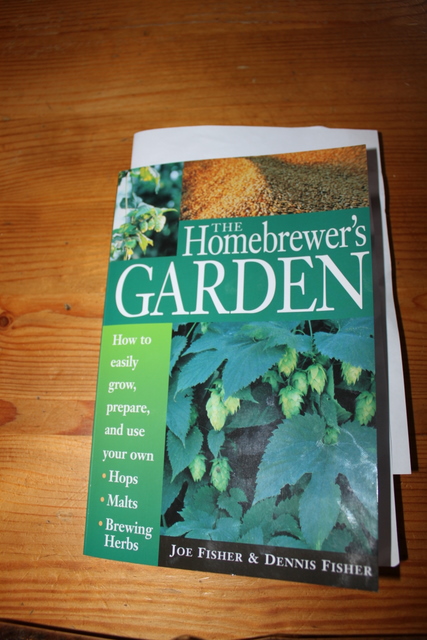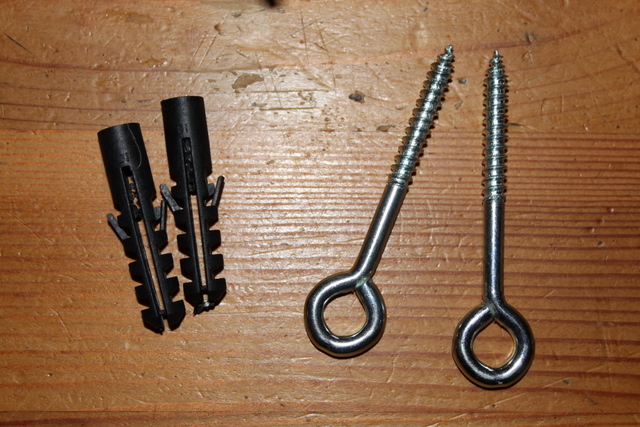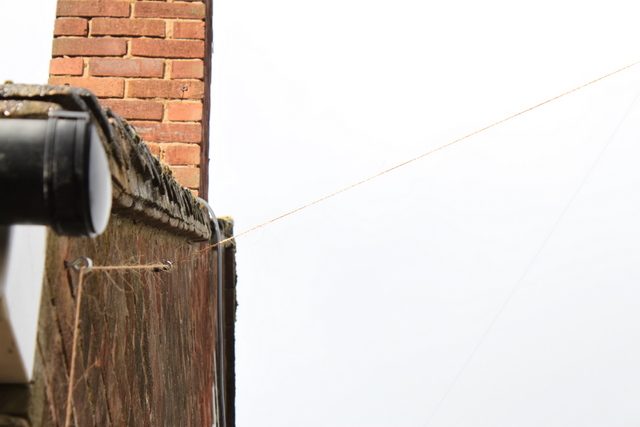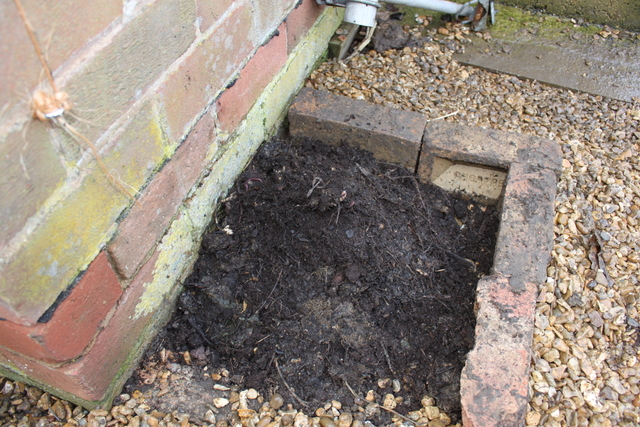Well, I decided I would attempt to grow my own hops which should be interesting to use in some of my future ales. The variety I’ve gone for is Challenger. Mainly becuase they are fairly versatile. They’re based on Goldings but they have more resistance to disease so I’ve read. I ordered a hop rhizome off the internet (like pretty much everything else I own!) and with some guidance from the book below I’ve put up a kind of trellis arrangement where the hops can benefit from plenty of sunlight.
This is how the rhizome arrived.
The first bit I did was to put the trellis up using some twine (courtesy of my late Grandad from his farming days!) and a few of these eyelets.
I’ve taken the twine from roughly ground level, up to the roof line, along the ridge of the roof a few feet and then over the vegetable patch. I’ve tied the end to a pole we have which is actually there to support my Dad’s aerial he used for shortwave radio. It actually makes the perfect place for the hops to grow, they should be fairly unobtrusive but accessible when it’s time to harvest and get plenty of sunlight.
The rhizome wants planting in a mound above ground so it doesn’t sit in too much water. I dug out a hole about a foot and a half deep and mixed the soil up with a mixture of home made and bought compost, planted the rhizome vertically (this appears to the way this one has grown), and built up a mound of compost up around it.
I think the start of the trellis may be a bit far from it at the moment but there’s no problem extending it. The rhizome arrived with buds on it so it should get underway fairly soon. It will take up to 3 years to reach maturity. There may be some hops the first year but certainly not many – if this is the case I’ll probably just use them for dry hopping or something. I don’t plan on using any of them for bittering purposes unless I get a lot more than I know what to do with.
I’m looking forward to using them in my beers and seeing what the results are like. They’ll want drying after they’ve been harvested to get the most out of them. 6 times more fresh hops are needed than dry ones according to the book although that could be interesting too. I’ll post some more in a few months when they are a bit more developed.
Hop on!





